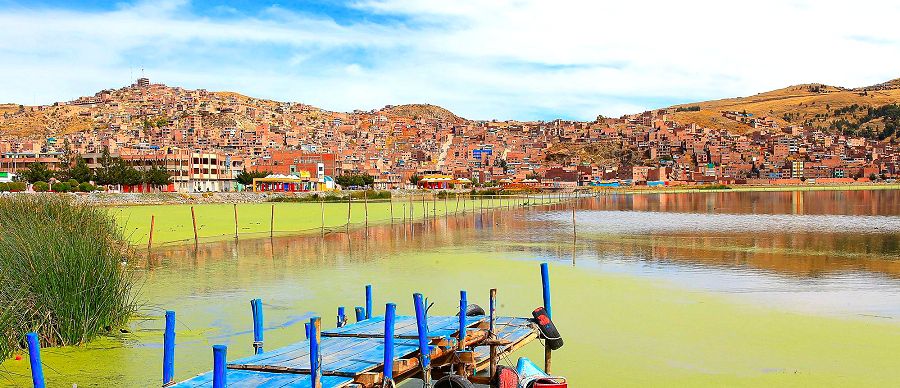LAKE TITICACA DOES NOT HAVE MOREHIS SPLENDOR OF ANTAN |
|
| Lake Titicaca is exposed to a serious problem because it is the receptacle of all the pollutants that are produced around it, especially on the Altiplano side.
It is with this cry of alarm that Juan Jose Ocola, responsible for the binational authority (Bolivia / Peru) that manages the environment has just alerted the international community, because some 1.6 million people live in this region where are the cities of Puno and Juliaca side Peru and El Alto, Bolivia side.
The reasons for this galloping pollution are many. It is caused first by the waste left by the 750,000 tourists who visit this region of South America annually. Lake Titicaca attracts, because it is dreaming with its azure blue waters and the romance inspired by the pre-Columbian civilizations on which we learn every day more details thanks to the many recent archaeological discoveries. But tourists are not the only ones responsible. Added to the uncivilized actions of tourists, there are toxic discharges produced by the surrounding cities. All wastewater from residential neighborhoods and industries ends up in the lake untreated. Pollutants favor the development of a green alga that is harmful to biodiversity, including animals, especially fish, which are indispensable for economically dependent fishermen. Domestic animals are also concerned, including cows and sheep (but livestock in general) who die of diarrhea after eating the "tortora" grass from the lake. The consequences for men's health are dramatic. The lake has significant infant mortality and health problems in high proportion. Peru and Bolivia have planned to invest $ 500 million to build several sewage treatment plants; $ 400 million by Peru while Bolivia simultaneously decided to allocate $ 77 million. In the meantime, are the inhabitants or rather the inhabitants who, with bare hands or almost naked (they are still equipped with latex gloves, but they do not wear a mask?) Periodically collect plastics, papers, disposable bottles, layers of babies, drugs and all kinds of rubbish. The most active belong to the Aymaras ethnic group. In local dress, under the scorching sun they pick up the garbage they pile up in biodegradable sky blue trash bags. Their multicolored skirts and black bowler hats stand out against the landscape of a sumptuous site where the Aymara people have lived for centuries. Some of these natives have even been trained to measure the lake's pH! Day after day, the lake suffocates under pollution. In the plant labyrinth of the tortora that invaded it (the tortora resembles a reed, it is the emblematic plant of the lake) it has become almost impossible for a motor boat to navigate, the level of water having Moreover, it has dropped nearly 70 cm in recent decades. The odor which reigns and which comes from the hydrogen sulphide, released by the decomposition of the sediments carried by the waters is unbreathable. It also destroys the ecosystem because it is responsible for neurotoxic and deprives the fauna and flora of oxygen. There is urgency to act; the first, long and difficult act must go through the identification of infrastructure constructions to be realized. The Inter-American Development Bank (IDB) has already lent $ 77 million. The European Union has just granted 8 million grants. France, in very poor financial condition has committed to lend 115 million dollars. It will have to be done quickly because the North of Altiplano, very populated, is the only liveable sector of the region, the South being covered by the desert Lipez. The risks of migration and ecological migration are threatening. |
|
| Clara Mitchell for DayNewsWorld | |
 |
|




